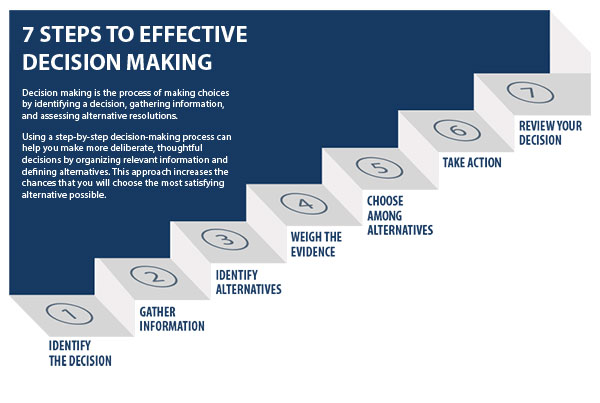Main types
2.2 Decision-Making Models Management theory recognizes differences between two major models of decision making. These are: – the classical decision model, and – The behavioural (administrative) decision model. The following figure shows these models, in addition to judgment heuristics approaches to decision making.
There are many types of decision making and these can be easily categorized into the following 4 groups:- Rational
- Intuitive
- Combinations
- Satisficing
- Decision Support Systems
- Recognition primed decision making
(Well spotted! I said 4 and there are 5 - read on for the reason why) Let's consider these in more detail.

Rational
Rational decision making is the commonest of the types of decision making that is taught and learned when people decide that they want to improve their decision making. These are logical, sequential models where the emphasis is on listing many potential options and then working out which is the best. Often the pros and cons of each option are also listed and scored in order of importance.
The rational aspect indicates that there is considerable reasoning and thinking done in order to select the optimum choice. Because we put such a heavy emphasis on thinking and getting it right in our society, there are many of these models and they are very popular. People like to know what the steps are and many of these models have steps that are done in order.
People would love to know what the future holds, which makes these models popular. Because the reasoning and rationale behind the various steps is that if you do x, then y should happen. However, most people have personal experience that the world usually doesn't work that way!
Intuitive
The second of the types of decision making are the intuitive models. The idea here is that there may be absolutely no reason or logic to the decision making process. Instead, there is an inner knowing, or intuition, or some kind of sense of what the right thing to do is.
And there are probably as many intuitive types of decision making as there are people. People can feel it in their heart, or in their bones, or in their gut and so on. There are also a variety of ways for people to receive information, either in pictures or words or voices.

People talk about extra sensory perception as well. However, they are still actually picking up the information through their five senses. Clair sentience is where people feel things, clair audience is hearing things and clairvoyance is seeing things.
And of course we have phrases such as 'I smell a rat', ' it smells fishy' and 'I can taste success ahead'.
Other types of decision making in the intuitive category might include tossing a coin, throwing dice, tarot cards, astrology, and so on.
Decision wheels are usually more humorous than intuitive but they do have a serious application.

Combinations
Many decisions are actually a result of combinations of rational and intuitive processes. This can be deliberate where a person combines aspects of both, or it can occur unwittingly.
For example, a person has listed the pros and cons of the options, assigned numerical values and added them all up. (The rational part.) But the end result is not really satisfactory, they are uneasy somehow (the intuitive part), so they change the parameters, and the numbers add up differently. This new result is more 'satisfactory', so they go with that one.
Satisficing
Instead of evaluating all the possible options and choosing the best, satisficing is where we pick the first one that will give us the result. We choose an option that is 'good enough', one that satisfies our needs and sacrifices other potentially better options. Hence, satisfice.
Decision Support Systems
Because computers can process large amounts of data quickly, they were soon put to use to help make decisions. Decision Support Systems range from a simple spreadsheet to organize information graphically, to very complex programs organizing info in international companies and including artificial intelligence that can suggest alternative options and solutions.
There are various types of decision making systems depending on how many people are involved, the form of the information being processed, what type of result is required, and so on.
There are pros and cons to using computers in this way, and of course, the computer is only as good as the information that it is processing. Which means that it still comes down to the humans...!
Recognition primed...
Gary Klein has spent considerable time studying human decision making and his results are very interesting. He believes that we make 90 to 95% of our decisions in a pattern recognition way. He suggests that what we actually do is gather information from our environment in relation to the decision we want to make. We then pick an option that we think will work. WeThe Decision Making Process
rehearse it mentallyTypes Of Decision Making Ppt
and if we still think it will work, we go ahead.If it does not work mentally, we choose another option and run that through in our head instead. If that seems to work, we go with that one. We pick scenarios one by one, mentally check them out, and as soon as we find one that works, we choose it.
He also points out that as we get more experience, we can recognise more patterns, and we make better choices more quickly.
Of interest here is that the military in many countries have adapted his methods because they are considerably more effective than any of the types of decision making we've discussed already. In fact, you could say that his model is a combination of the rational and intuitive approaches. (That's why I said above that there are only 4 groups!) It's also an example of satisficing!
Learn how to use this model for yourself...
Return from Types Of Decision Making to Definition of Decision Making
Comments are closed.